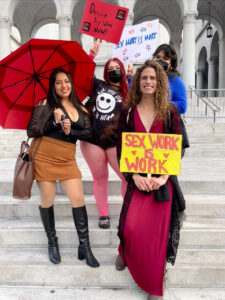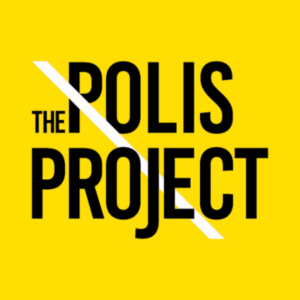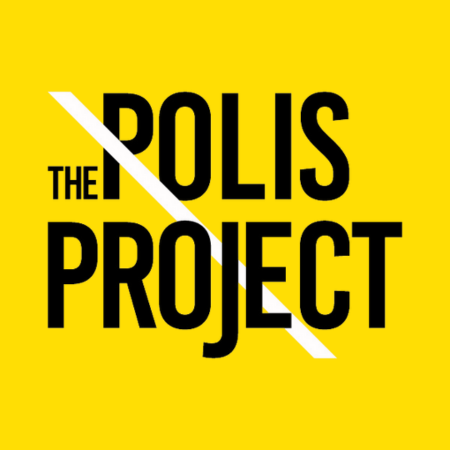
How the Indian state is killing Bastar’s children
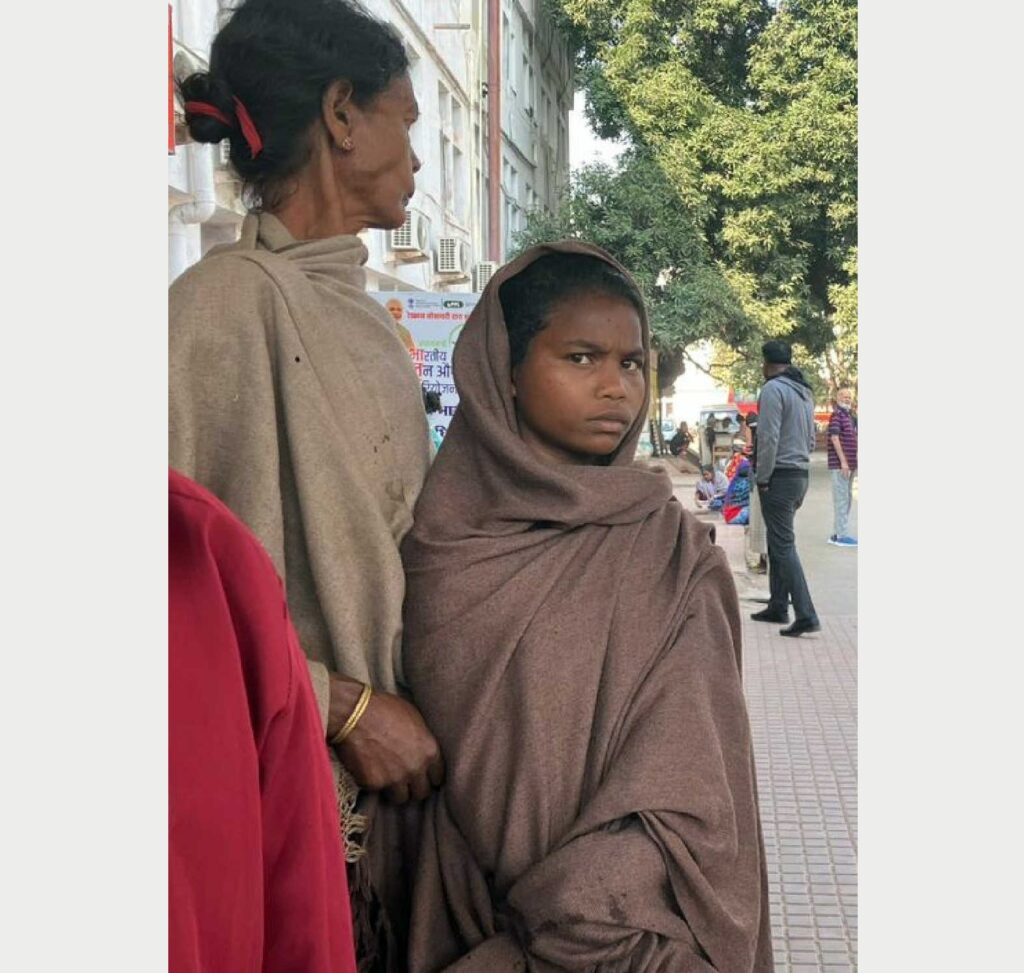
Ramli is 17 years old, but she did not look a day older than 14 at the hospital when she appeared from behind her mother—spine straight and a piercing gaze with her strong and gentle eyes. She was wrapped in a shawl, unnervingly silent, and keenly observant. Occasionally, she would allow a smile. The slip from the community health centre at Bhairamgarh, in Chhattisgarh’s Bastar region, only said that a foreign object was lodged near her spine, and referred her to another hospital without offering any explanation.
Ramli’s parents Raje and Vijja, along with Reena—a young woman from a nearby village—had accompanied her. They rushed from hospital to hospital—Bhairamgarh to Dantewada to Jagdalpur—with no one telling them what was wrong but each of them expressing alarming urgency. Each time, the note from the medical facilities had the same instruction: “Refer to a higher facility.”
It was only when she was brought to the hospital in the state capital of Raipur, nearly five days later, that the doctors revealed that it was not just any foreign object—it was a bullet. A bullet measuring 2.5 cm by 5 mm, as the operation theatre notes would later reveal. On 12 December, the police shot Ramli in the back. The bullet had entered through the back of her neck, and was lodged a few millimetres away from the mandible—her jawbone.
“How could the police shoot our child?” Ramli’s parents asked, almost in disbelief. When they left home on 14 December, 2024, they did not know that they would not be returning the same day. They were not prepared for the prolonged time the treatment and surgery took. They had not brought an extra pair of clothes, had nothing warm to wear, and no slippers either. It had been over three days by the time the Raipur hospital confirmed that it was a bullet lodged near their daughter’s spine, and they had not eaten a morsel for nearly 24 hours.
Over the next few days, as tests were being ordered and the surgical team was being prepared, Ramli’s parents divided their time between being by their daughter’s side in the ICU and on the hospital terrace. Families of patients had made a makeshift shared living space on the terrace. They used the common toilet there to bathe and wash their clothes, which were hung out to dry in the winter sun. They would lay out pieces of cardboard boxes and chatais—floor mats—to eat and sleep on, and hope and pray for their loved ones to heal and recover. In between the silent waiting, Vijja would suddenly start describing how Ramli was shot. He lifted his hands to gesture at a pointed gun being fired and said, “They chased our children and shot at them,” continuing to add, “We were farming Kosra. How could they do this?”
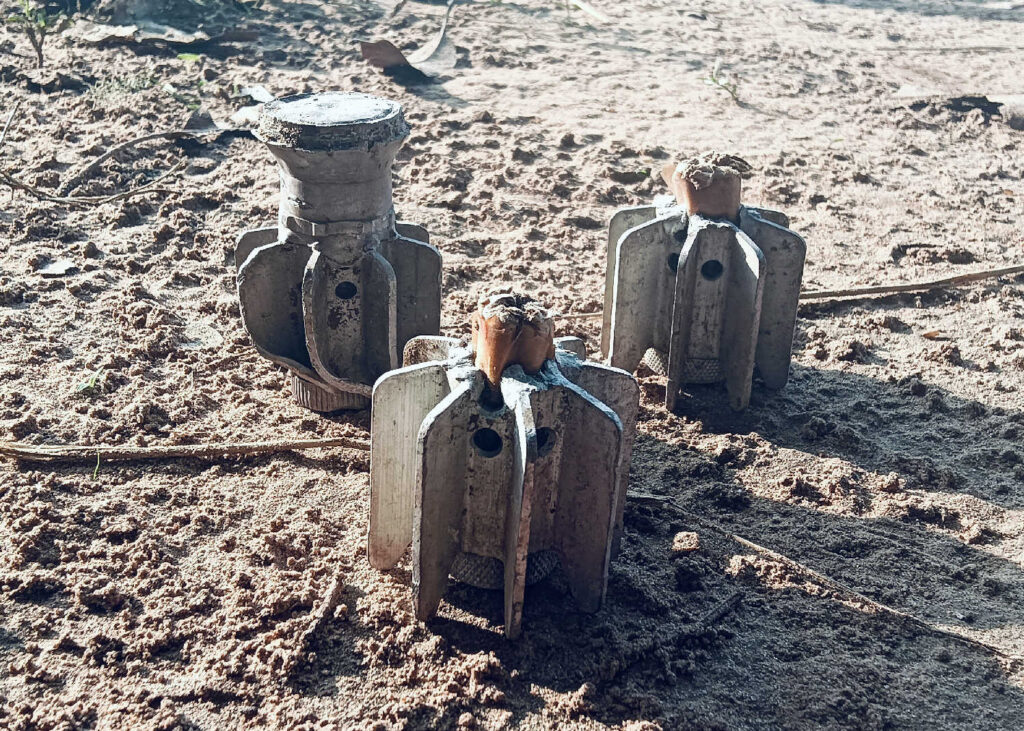
Under the garb of fighting Maoist insurgency, Bastar has now become one of the most militarised regions in the world. About 250 security camps have been set up in the region since 2019 alone, with one civil-society report from August 2024 noting that the region had one security personnel for every nine civilians. Media reports note that in Abujhmad, the forested region where Ramli is from, the paramilitary and other state forces have set up eight security camps in the past year alone, and opened several forward bases in recent months. It is well documented that such widespread militarisation is a grave danger to the human rights of the local residents. Time and again, the people of Bastar have spoken out against the evils of such state policy, proposing alternatives to aggressive advancement of distance-demolishing technologies such as large roads and the military-industrial models of development imposed on them.
On 11 and 12 December last year, Bastar’s District Reserve Guard Force, the Special Task Force and the Central Reserve Police Force (CRPF) carried out an area domination exercise in the Abujhmad hills, on the border of Narayanpur and Bijapur districts. The uncharted Abujhmad forest, once considered a Maoist stronghold, spreads over 4,000 square kilometres in southern Chhattisgarh. According to media reports, the police had engaged in an “encounter,” killing seven Maoists in the forest. However, villagers stated that the police had opened fire while they were farming, killing six innocent villagers including minors, and injuring several others, including Ramli and other children.
Between 30 December 2024 and 1 January 2025, I visited the village of Kummam and surrounding forests in Narayanpur district as part of a four-person independent fact-finding team. The team met with the injured, the families of the deceased, as well as eye-witnesses. Our findings reveal that the villagers had been surrounded, chased, even sussed out by the use of drones and shot at from close proximity. Among the injured were young children aged between eight and 14. Among the dead, three are most likely minors, and the others at best in their early twenties.
The continued state-backed counter-insurgency operations have turned Bastar’s forests into war zones, where Adivasi children and villagers face brutal state violence. The militarisation of Bastar has led to routine “encounters” where children are shot, civilians killed, and entire communities terrorised. Justice eludes the people of this region as the government avoids accountability in cases of extrajudicial killings. This relentless violence, justified as a fight against Maoist militancy, robs Bastar’s youth of their childhood and often, of life itself.
Hunting children in Bastar
Two young men from the District Reserve Guard Force (DRGF) had accompanied Ramli, her parents, and Reena to Raipur. “Sir gave me only Rs 1000 and said I should feed everyone and buy whatever is needed with just this much. What should I do?” one of the DRGF personnel said. The police were obviously still squabbling about which department would take the blame, and pick up the tab. He seemed to be in his early 20s. His companion, a fair bit younger, had joined the DRGF only a week ago and this was his first assignment. The two were schoolmates. Like others in the DRGF, they too were Gond Adivasis, like Ramli and her parents. They shared the same mother tongue but had been forced to speak a different language at work.
Following orders from senior police officials, they had seized Reena’s phone, revealing their insecurity. Every time the fact-finding team would find a moment alone with Ramli and her family, the DRGF personnel would rush to our sides to overhear our conversations. The orders they had received were clear and their fear palpable. Whenever we left the hospital, her parents and Reena said they would be harangued by the personnel with probing questions and threats: “Why have you called activists? Wait till you get to the village, we’ll show you then.”
The DRGF is a Chhattisgarh-based special police force mainly comprising former Naxalites of lower cadres, and villagers displaced during the Salwa Judum, a controversial, state-backed counter-insurgency movement. Despite the fact that the Supreme Court has clearly stated that the use of Adivasi youth in counter-insurgency operations is unconstitutional, several special-op forces have been established in the last two decades that consist either entirely or largely of tribal youth, such as the DRGF and the Bastariya Battalion. This stands in direct violation of the Supreme Court judgement of 2011. The judgement points out, “Many of these Adivasi youngsters, on account of the violence perpetrated against them, or their kith and kin and others in the society in which they live, have already been dehumanised… To use such feelings, and to direct them into counter-insurgency activities, in which those youngsters are placed in grave danger of their lives, runs contrary to the norms of a nurturing society.” In strong words, the court added, “That some misguided policy makers strenuously advocate this as an opportunity to use such dehumanised sensibilities in the fight against Maoists ought to be a matter of gravest constitutional concerns and deserving of the severest constitutional opprobrium.”
In blatant contradiction, senior police officials such as the former Inspector General of Police (IGP), Bastar Range, SRP Kalluri, proudly described the DRGF as “former Naxalites of lower cadres, Maoist sympathisers, villagers displaced during Salwa Judum, who are fondly called son of soils, strongly passionate to reclaim their lost land from rebels.” Similarly, the Bastariya Battalion was set up as an all-tribal special sub-force of the CRPF, which included ex-Maoists as police informants and was “bent upon taking advantage of the tribal recruits’ geo-spatial experience of their own soil.”
The day before Ramli was to undergo surgery in Raipur, a child had run away from Dantewada District hospital. Thirteen-year-old Sitram had had enough. He had been treated and discharged, and yet the police had insisted on keeping him and another child, Sonu Oyam, at the hospital for longer. To readmit them, the police got the doctors to attest that the children were being treated for malaria. Bastar has one of the highest Annual Parasite Incidence in the country. But Sitram was not there for malaria. He, too, had come with a bullet wound. A police bullet had gone through his one thigh and come out the other. Like Ramli, the police had shot him during the same combing operation. He tried to run away from the hospital because he wanted to attend his father’s last rites. Unlike him and Ramli, his father, Mase Oyam, who was also shot by the police, did not survive.
An article in India Today described the preparation for the operation in great detail, vividly capturing the “buzz” in the DRGF camp in Dantewada. The local commander asked the “boys and girls” in the troops to get ready for a briefing—a description that reveals the apparent age of those being deployed in the counter-insurgency operations. According to the report, an agency monitoring phone calls in remote areas had traced a call made from atop a forested hill in south Bastar: “an unlikely place for a civilian caller.” The information was passed on to senior police officials, and “call analysis, corroborated by ground intelligence and visuals from UAVs (unmanned aerial vehicles), suggested that there could be a Maoist camp in the area.” Once the commander explained the location and approach for the operation, they loaded their vehicles and were ready. “The hunt begins,” the report noted.
A phone call by a civilian leads to a “suggestion” of a Maoist camp, and ultimately to a “hunt.” A hunt that put a bullet in Ramli and killed Sitram’s father. It is what the Chhattisgarh chief minister, Vishnu Deo Sai, called a big success. Seven armed and uniformed Maoists were killed, news reports said. The Maoists also released a statement claiming that five of the deceased were ordinary villagers.
On the other hand, police press releases contradicted themselves. While the one on 12 December said the encounter happened in the forested patch between Kalhaja and Donderbeda, a later press release dated 18 December added the Rekavaya, Lekavada, Kondrakoti and Brehbeda areas. The first press note said the encounter happened at 3 am, and the latter one clocked the time at 8 am. When villagers managed to contact journalists and activists, news about Ramli, Sonu, Jayaram, and Sitram being injured surfaced, raising some obvious questions about the alleged “encounter.” The police released yet another statement. Unable to claim that the bullets that had injured and were lodged in the bodies of these children were not those of the police, this time they alleged that the Maoists had used these children as “human shields”.
Sundarraj Pattilingam, the current IGP of Bastar Range, did not respond to questions sent by The Polis Project regarding these allegations at the time of publishing this report. However, in January, the IGP Bastar told the Times of India newspaper that the accusations against the security forces for shooting villagers and injuring children were “false and fabricated”. He also reiterated the claim of children being used as human shields.
The “encounter”
Days after meeting Ramli, we found out what had happened. As part of the independent fact-finding team, we trekked for over a day to reach her 13-household village, Kummam, in the hills of Abujhmad forest. On the morning of 11 December, police and paramilitary forces began ascending the hills of the Kummam Penda—a Gondi term for the place where jhum cultivation is done.
For a few months each year, villagers in the Abujhmad (Madh) forests pack their belongings and move to patches they clear in the surrounding hills to farm a millet called kosra, lentils, tomatoes and large cucumbers. They set up temporary shelters and camp there till the kosra is cut. Amid this beautiful yet harsh landscape, the labour is streamlined—there is an unspoken code as to who does what. So, on the morning of the 11th, all the men and boys were gathering the kosra while all the women and girls were either plucking udad (a variety of lentil), or doing reproductive labour of cooking, clearing and filling water. Children were playing. That is when the sound of shots being fired filled the air, resounding through the Abujhmad hills.
When the police entered the Kummam Penda and opened fire, a bullet scraped eight-year-old Sonu Oyam’s head as he played in the fields not far from where his mother Maase worked, the villagers said. Maase ran to her child, washed his wound, and held him tight as she fed him some pej (rice soup). Later, in her testimony, she said about Sonu: “He’s always been a quiet child; doesn’t speak much. But he is brave, he is not one to be afraid. I, on the other hand, am very afraid now. I’m afraid the police will come back and do what they did again. They had never come here before. How could they do this to us—we, who farm kosra? How could they come and kill the kosra cutting people for no reason?”
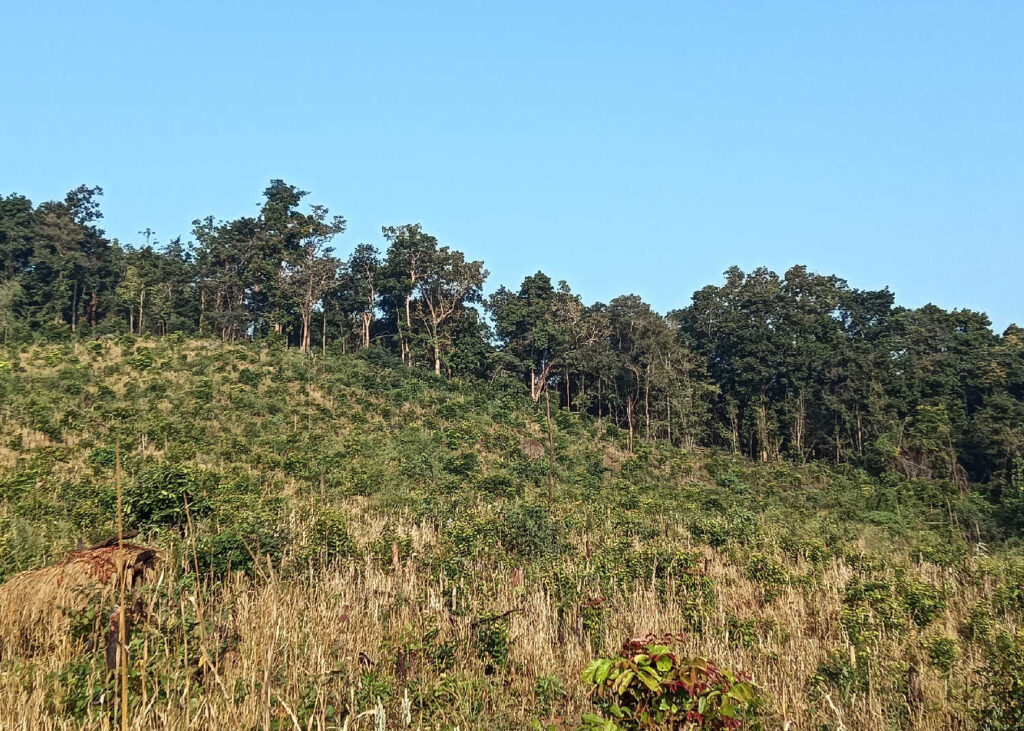
After the first few shots were fired, all the older children, young men and women began running towards the forested hills to save themselves. Older women from the village—their mothers and aunts—described how they watched them run as the police chased after them at gunpoint. The women then began running after the police—pleading with them not to shoot. “‘They are our children’ we said to them, ‘please don’t shoot.’ But the police wouldn’t listen. Instead, they turned around and pointed their guns at us, threatening to shoot us if we went any further,” said Ayte Oyam, the mother of 16-year-old Somari. “They had also brought dogs with them. What are we, animals? To be hunted down by dogs?”
Somari was one of the 16 who managed to run far enough to find a hiding spot in the midst of the forest. While running, they came across a group of wild pigs who began to scatter, which stopped their movement. That’s when shots from the opposite direction were fired, and they realised that they were surrounded by police troops on all four sides. “The pigs saved us,” said 18-year-old Manish Oyam. “We would have run straight into their line of fire and died if it were not for the pigs.”
Sixteen of them managed to hide through the night in the winter chill amidst cheen ghaas—a tall grass endemic to the region. Their mothers and aunts, who had been turned away at gunpoint, said they heard no firing through the night. The next morning, however, the sound of gunshots pierced their ears. They feared the worst. Of the 16 who were hiding, ten survived to describe their experience; Ramli was one of them. On the morning of 12 December, drones were flown overhead, and could have possibly spotted the unarmed villagers fearfully hiding in the grass, and yet the police opened fire on them.
Manish, Sudri and Sunila recalled their ordeal. As they hid behind the tall grass in silence, they overheard the troops conversing in Gondi: “Should we catch them alive or kill them straight away?” one of the troops said. The troops were just a few metres away from them, across the tall grass, and had surrounded the grassy patch on all sides. From what the three narrated, it seemed the troops had strategically left a little space near an opening amid the grass. After some chatter, one of them replied, “Let’s kill them straight away.” That’s when Motu Oyam, barely 19, got up and ran through the small opening. There was a whistle, and then some shots, and before those still hiding could blink, Motu had been shot dead. The others also got up and ran in fear; all except for Nevru, aged around 18, and Somari.
“I dived to the ground as I ran and the bullet that was about to hit me instead hit Ramli,” 18-year-old Manish told me. Another young man, Jayaram, was shot on his left hand while running. Sudri, Munni, and Sunila—all aged between 15 and 19—helped Jayaram and Ramli up and ran with them. By dusk, they managed to reach Edva village, at least a three-hour walk from Kummam. “All we could think about was that we needed to get these two (who had been shot) to safety,” Sudri said. That same evening, five others—Manish, Santi, Kumli, Maate and Tulsi—reached Kumnar village, around four hours away. One of them, Rama Oyam, aged between 18-20, remains missing. No drone has been flown by the police to find him since.
Of the two who remained at the hiding spot in fear, Nevru was possibly shot as he tried to escape. He probably managed to drag himself for some distance after being shot, where his body was found by villagers and journalists who visited the site on 18 December, six days after the incident. As for Somari, one of the men who had fled and managed to hide nearby heard her wails. “Those [sounds] were of someone being assaulted,” he said, unwilling to be identified due to fear of the police. Somari was then shot dead. Days later, when her mother Ayte finally saw her body—once they had taken it out of the body bag and got it ready for burial—she realised what her daughter’s screams had suggested. “Her genitals were very badly bruised. It looked like she had been raped,” Ayte said. The family has not been given a post mortem report so far.
Kohla Oyam, aged around 23, was among those hiding in the grasses, and was shot and killed as he ran. He was a father of three young children. When the forces entered the Penda on the 11th, his wife Budhri was out to fetch water, and the children were in his care. Rainu, only around two years old, was in Kohla’s arms as he fled when the police opened fire. Budhri imagines Kohla would have put the child down somewhere safe before running further, but she is not sure. Maybe he took the child along and Rainu was with those that hid. She cannot be certain because Kohla was killed and Budhri was only reunited with Rainu two days after the incident. The police had picked up the child—we do not know where—and trekked all the way to Lekavada and left him there with an ageing man named Masa Oyam who had no idea whose child it was. “They just handed him to me hurriedly, and said, ‘Just get him back to his mother,’” Masa narrated. “I protested, saying I didn’t know who the mother was or where the child was from, but they insisted. ‘Just do it,’ they said, and left.”
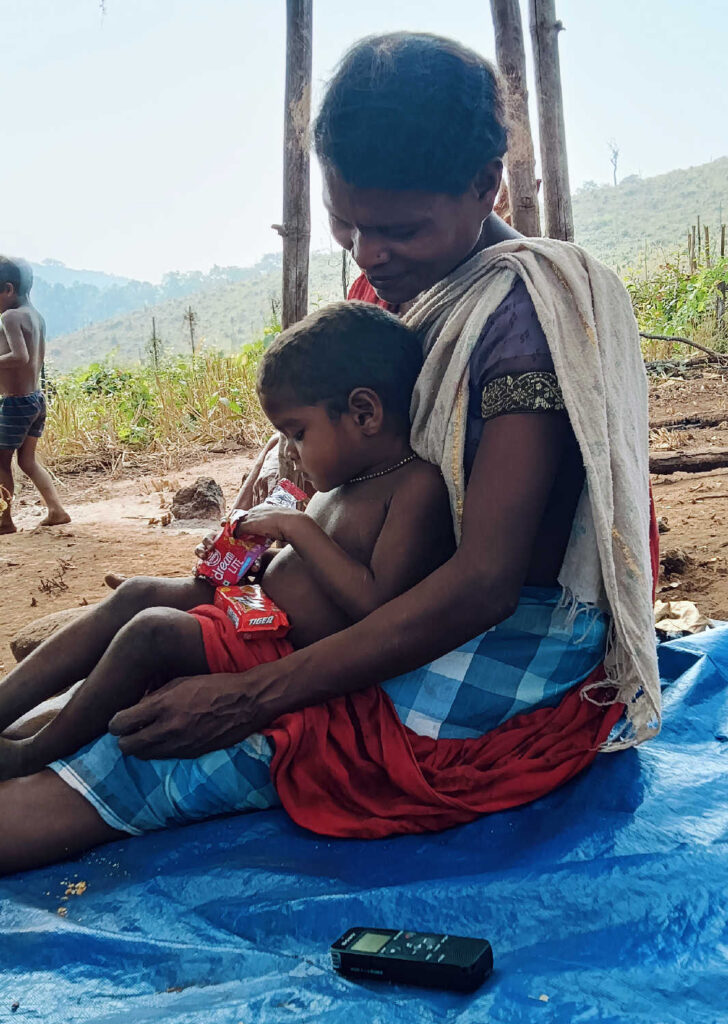
We will never know where little Rainu spent the night or what he went through. When we met him on 31 December in Kummam, a little more than two weeks after the firing incident, his racing heartbeat and heaving chest only showed that he knew fear. His refusal to let go of his mother’s chest, even as he managed a small smile at us, told us that he knew he was home, and was not ready to leave it again. His siblings, Bimla and Sukla, had spent that night alone in the forest too. “What if they had been attacked by bears?” Budhri said, her eyes filled with tenderness, fear and anger all at once. Sukla was only three. When we asked Budhri how old Bimla was, she said she didn’t know. “Four?” we suggested. A man sitting nearby replied, “No. Cannot be. She does a lot of hard work. So, she must be five or six.”
During the same operation, forces had also entered the Penda of Lekavada village, a four-hour trek through the hills from Kummam. A man named Masa Oyam had gone to bathe in the stream that same morning, and was shot at point blank by the forces the moment he arrived there. Three eye-witnesses returned to the village and narrated the incident to Sudni, his wife. Masa was Sitram’s father. Sitram too had gone to the same stream, not long after his father, to gather water. He had returned drenched in blood; a bullet had pierced through both his thighs.
Stolen childhoods in Bastar
Just before we left Kummam, we met Pakli. She was Nevru’s younger sister and Gudsa’s daughter. Gudsa Oyam, who was the Patel or village head, had also been shot and killed on 11 December as he ran for shelter. Pakli was angry, and she spoke with piercing words and a look that was even more so. “I had come home from the hostel just for a few days because I was unwell,” she said. “Now I can never go back to school. The police killed my father and my brother. My other siblings are all very young. There is no one to help my mother grow kosra, so I will have to return to the village and teach my siblings the work. I am angry at this government. Angry that they have taken away my chance to go to school.”
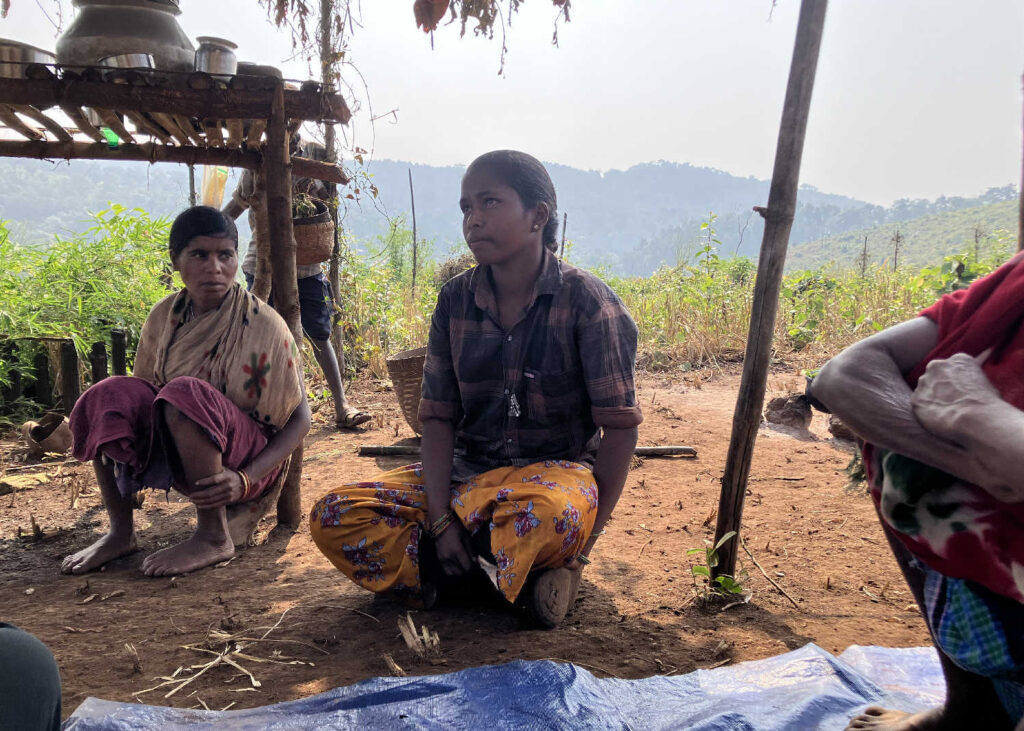
There are no government schools for miles around Kummam and Lekavada. The closest school is the Bhumkal Chhatravas in Rekavaya. That is where Pakli studied till her father’s death. It is also where Sitram’s brother Jameen is enrolled. In May 2024, during the summer vacation when the hostel was empty, CRPF troops had come and wreaked havoc there. They burned all the attendance registers and papers at the school, and declared it a Maoist training camp. We stopped there on our way back downhill. The headmaster of the school, Pradeep, in his early twenties himself, recalled the fear he experienced. “I live in the village just next door. They didn’t let us leave our homes. They said they would shoot us if we left. I could do nothing to save the documents.”
Later that year, with the help of activists, the school teachers and staff met with the district collector to ensure recognition for the school. “If private schools can be opened at every corner, why can’t a school that is run by 20 panchayats, in a place where the state has never bothered to open a school, not be given official recognition?” they asked the collector. Pradeep was recently informed that the school has finally been issued a District Information System for Education (DISE) code, making it a state recognised school.
The school has 115 students and four teachers at the moment. Sport is an integral part of their day, and most children we spoke to said that Environment was their favourite subject. As we were leaving, Sitram’s brother Jameen called out to us and said, “Please bring us some Hindi story books next time, we have very few, and we really enjoy reading them.” His earnest smile hid the pain of having lost his father just days ago. His shirt caught my eye—I’d never seen anything like it. He had stitched a special pocket onto it—a pen-pocket. No one could take away his right to an education.
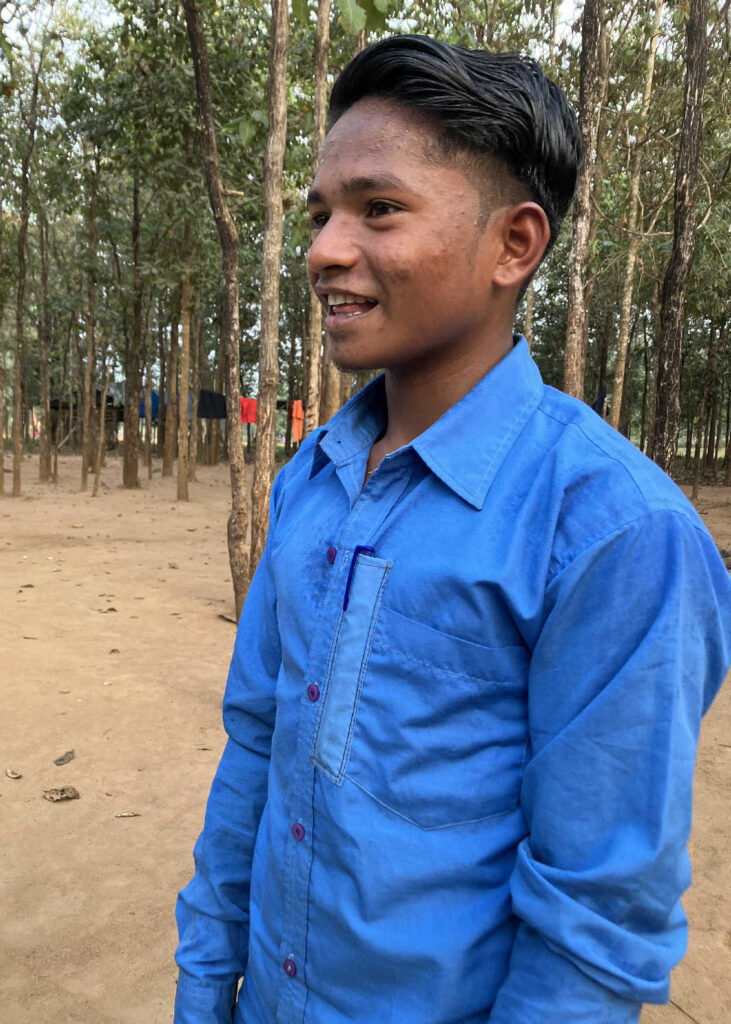
As we trekked further back down and reached the banks of the Indravati river where the local youth have been leading a protest to save their land, people and livelihoods from destruction and violence, we were shown the remnants of some mortar shells. These were from a new tactic of aerial bombing adopted by the state. In 2022, the People’s Union for Civil Liberties (PUCL) Chhattisgarh conducted a fact-finding into the use of Rocket Propelled Grenades (RPGs) by the state and filed a complaint regarding the aerial bombing of civilians with the National Human Rights Commission (NHRC), but no action has been taken so far.
The shells have had deadly consequences for children. On 12 May 2024, Lachman and Boti Oyam, aged 9 and 12 respectively, from the nearby village of Bodga, had chanced upon a few shells while they were working with a tendu patta dealer, helping him in drying leaf bundles. The propeller end was visible above the ground and the bulbous projection containing the explosive material was buried in the soil. Curious, the children used some sticks and stones to dig up the odd treasure they had chanced upon. One of those was still undetonated. It exploded, killing them both.
This incident happened just days after journalist Vikas Tiwari had telecast a live video from the area, giving a clear warning that there were still undetonated shells lying around the village, and called upon authorities to take heed and clear them. Despite this, the police and administration did nothing. Besides the serious questions the illegal use of aerial warfare raises, how does the state explain its inaction over the shells, even after the issue was brought to their attention? Two children are now dead. In order to cover up the incident, the Chhattisgarh government gave the families some compensation money under the “Naxal-peedith” scheme, which is intended to compensate victims of Maoist violence. The state has so far not been held accountable for the deaths of Lachman and Boti. One of them dreamt of being a school headmaster. The other, a nurse.
However, Boti and Lachman are not alone. Their little graves are flanked by many others dotted across the forests of Bastar. Several children have been killed in 2024 in police violence under the guise of anti-Naxal operations. On the very first day of 2024, six-month-old Mangli was shot dead in the arms of her mother in Mutvendi, Bijapur. Maase Sodi was trying to save the trees in her village from being cut, when a police bullet pierced through her hand and into her baby.
In Bastar, the year 2024 recorded the highest number of “encounter” deaths, highest number of “surrenders” and highest number of arrests ever: 1000 people arrested; 837 surrendered; 287 killed (as opposed to 20 killed in 2023). Celebrating these numbers, the federal home minister Amit Shah noted that by 31 March 2026, Naxalism would be eradicated from Chhattisgarh; a telling date to have chosen. Villagers in Kummam told me that when they first got news that seven bodies had been brought down the hills, villagers in Palli had allegedly watched the DRGF, STF and CRPF troops dance in joy around the corpses. Each body carried a price tag. By 31 March 2026, then, the allotted prize money would be distributed, and the account books closed; a ledger stained by the blood of murdered children like Mangli, Somari, Boti, and Lachman.
The lives of children in Bastar seem to have no worth at all. Just as we were approaching the place where Nevru had been buried, we passed a home from where we heard inconsolable sobs. A woman was weeping; her infant had just died of illness that same day, most likely from something generally curable, like diarrhoea or malaria. Nevru had been buried just a few days ago, and his grave was distinct from all the others since it was still covered by sticks and leaves instead of stones. Close by, a man and two boys were digging a hole. It took us a moment to understand that they were preparing the infant’s grave.
In this country, where grades of human beings are determined by birth through the caste system, this violence takes on a particular form. In Bastar, people are criminalised for wanting to save their lands and community, and for demanding what is rightfully theirs. Their children are killed—chased at gunpoint while farming or playing, blown away by an undetonated mortar shell while drying tendu leaves or when a bullet fired blindly by the police goes through their mother’s hand and into their chest. Sometimes, they die simply because there is no primary health care accessible. Almost always, they die because they are children of “lesser” people.
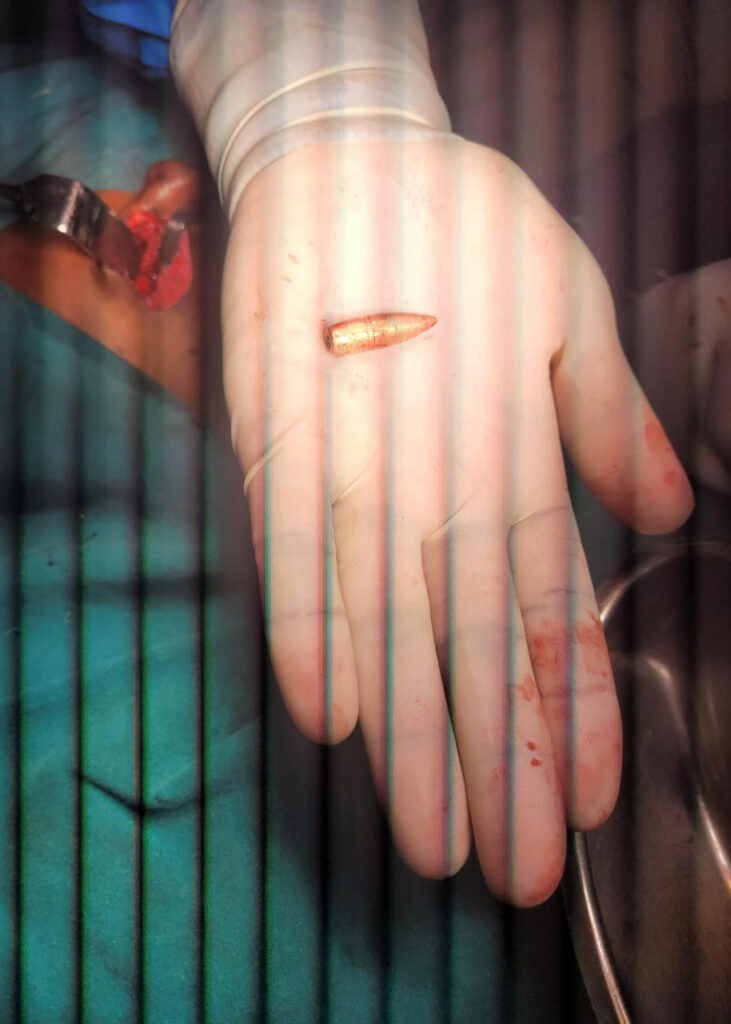
In India, children have been killed and criminalised for long—sometimes because their parents did not have required documents, sometimes for falling in love with someone from another caste, and sometimes even before they are born, because of their sex.
On 22 December last year, an educator from Dantewada phoned the District Child Welfare Committee (CWC), and expressed concern about Sitram and Sonu being detained and questioned by the police in hospital. Wishing to remain anonymous, the educator told me he requested that the CWC intervene to ensure the children’s wellbeing. The CWC replied saying they could not do anything because these children “do not come under the Children in Need of Care and Protection category.”
The cruelty of this response is only matched by its absurdity. The Juvenile Justice (Care and Protection of Children) Act empowers a CWC to, among other things, ensure the “care, protection, appropriate rehabilitation or restoration of children in need of care and protection.” However, in a wide-ranging definition of the category, children who were unofficially detained and questioned by the police, prevented from going to their families, were not considered among those in need of care and protection. It is in these grey areas that security forces in Bastar thrive.
In an era of growing aggressive ethnic and cultural-religious nationalisms, children worldwide are more vulnerable to violence today than ever before. Last year, UNICEF noted that the impact of armed conflicts around the world on children “reached devastating and likely record levels in 2024.” The report added that more children than ever before are living in active conflict zones—over 473 million, more than one in six globally—and as a result, deprived of their rights, including by being killed, injured, forced out of school, or critically malnourished. The larger picture is more concerning. As per data available till 2023, over two thirds of the world’s children were living in conflict ridden countries. This statistic could only be worse now, given the genocide being committed by Israel in Palestine, where children are being actively targetted and massacred. It is a genocide the world is witnessing in real time, live-streamed on phones and televisions. On average, one Palestinian child has been killed in the West Bank every two days since October 2023. At the same time, the current Indian government’s great admiration for Israel and desire to emulate its military strategies is no secret. Israel leads the race to develop and test new surveillance and defence technologies, exported to fuel the globe’s most brutal conflicts, and India is Israel’s top defence buyer.
It begs the question—what will it take for the state to stop killing children? To acknowledge that they are, in fact, in need of care and protection. By creating legal categories, the state implies that there are certain children who are outside the need for protection, which in turn, enables state violence against children as witnessed in Bastar today. But indisputably, it is the responsibility of the state and society to ensure that each and every child is guaranteed care and protection.
The plight of children in conflict areas like Bastar presents a sobering reality that demands wide attention. As state operations against Naxal groups intensify in Bastar, with 2024 showing unprecedented numbers in arrests, surrenders, and casualties, children remain among the most vulnerable victims. In this region, the children’s resilience amid systemic challenges raises critical questions about protection policies and the true cost of ongoing counter-insurgency operations in regions where the most vulnerable communities continue to bear the heaviest burden.
Despite the relentless violence of this world, hope stays with me like a stubborn affliction. Perhaps it’s because I work with children. Every day they give me something to hope for and remind me that a better world is possible; a world whose heartbeat they seem to carry in their smiles, sighs, and dreams. Even in their rage and disappointments. And most certainly, in the pockets for pens they sew onto their shirts. I end this piece with two images etched in my mind—Pakli’s anger at not being able to go to school any longer and Jameen’s stitched pen-pocket. Even as the nation continues to fail them, the determination, tenderness and courage of these children are perhaps our only hope.
(With inputs from Soni Sori)


